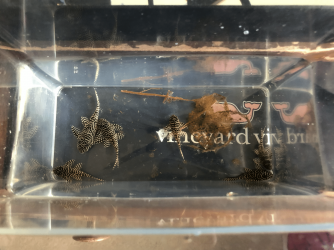Mellowaquatics
New Member
Hi all,
So I recently picked up a group of 6 L260 plecos, but have some concerns about my tap water.
-I know I have chloramines in my tap so I was wondering if anybody had experience with water changes and chloramines regarding hypancistrus.
-I know prime "detoxifies/removes" chloramines, but doesn't this just leave the ammonia left behind?
-I was wondering if I could get away with adding my tap straight to the tank as long as I have added prime, I know the ammonia gets broken down within 24 hours. This method of adding conditioned tap water works for my other tanks, but obviously I want to research as I understand hypancistrus are very sensitive to ammonia, nitrite, nitrate.
Below I have attached a photo of the L260's, any advice is appreciated!
So I recently picked up a group of 6 L260 plecos, but have some concerns about my tap water.
-I know I have chloramines in my tap so I was wondering if anybody had experience with water changes and chloramines regarding hypancistrus.
-I know prime "detoxifies/removes" chloramines, but doesn't this just leave the ammonia left behind?
-I was wondering if I could get away with adding my tap straight to the tank as long as I have added prime, I know the ammonia gets broken down within 24 hours. This method of adding conditioned tap water works for my other tanks, but obviously I want to research as I understand hypancistrus are very sensitive to ammonia, nitrite, nitrate.
Below I have attached a photo of the L260's, any advice is appreciated!


